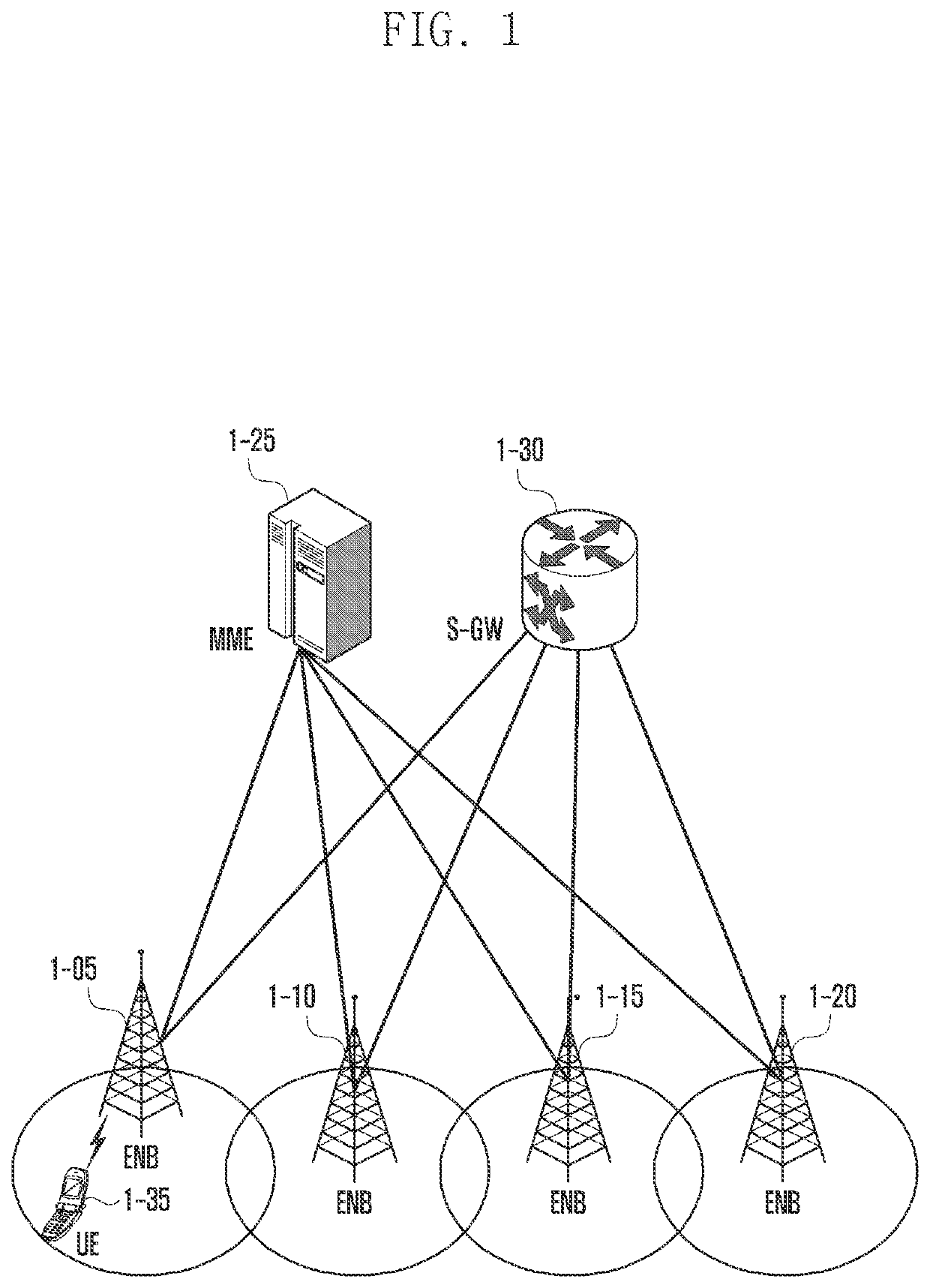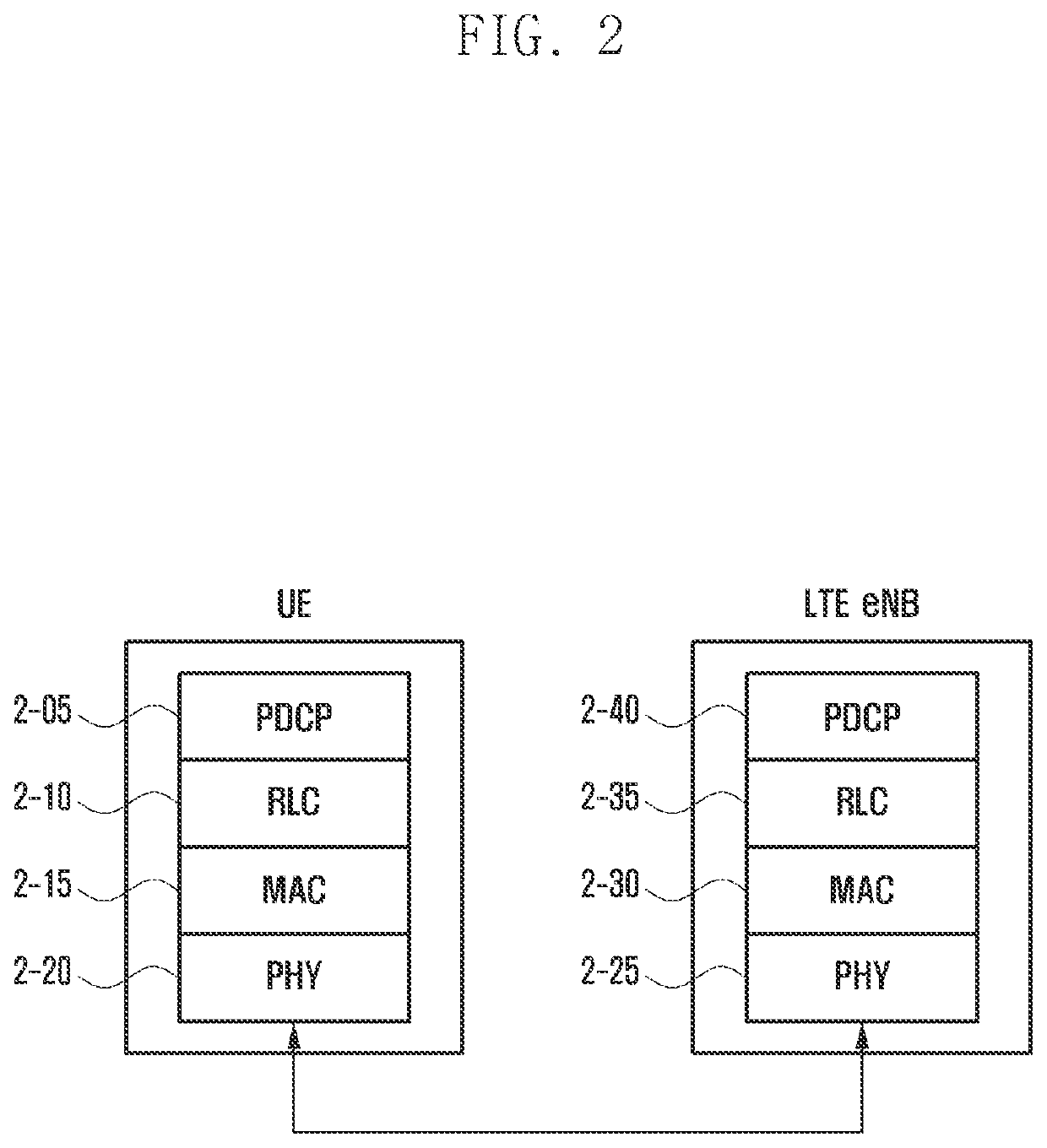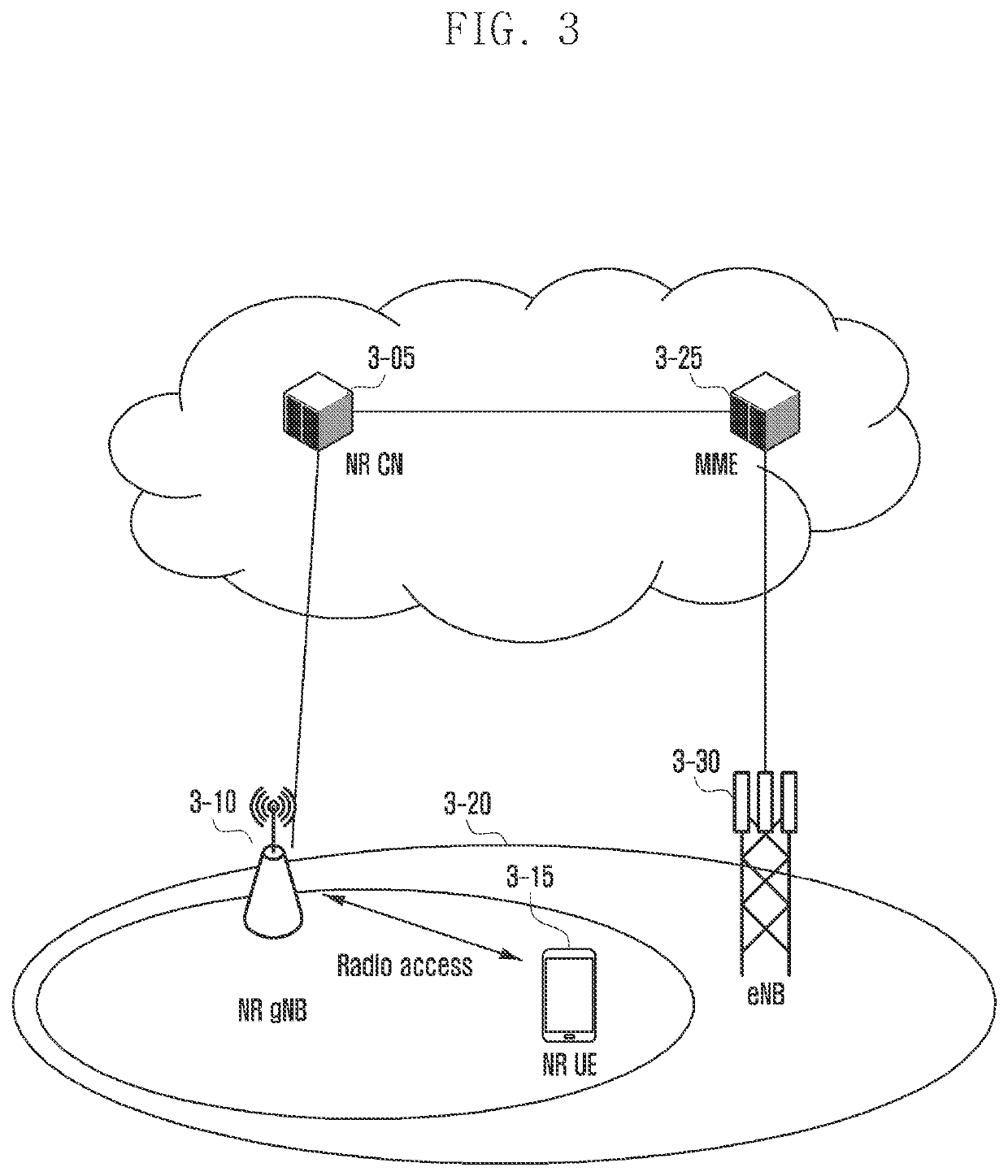Method and device for supporting multiple scg configurations in dual connectivity supported by next-generation mobile communication system
a mobile communication system and dual connectivity technology, applied in the field of operations, can solve the problems of data transmission or reception delay, significant battery consumption of the terminal, etc., and achieve the effect of low transmission delay and high data transmission ra
- Summary
- Abstract
- Description
- Claims
- Application Information
AI Technical Summary
Benefits of technology
Problems solved by technology
Method used
Image
Examples
fourth embodiment
[0215]If basic RRC connection configuration is completed, the base station may transmit, to the UE, an RRC message (UECapabilityEnquiry, 6-35) to inquire about the capability of the UE, so as to identify the capability of the UE (UE capability). As another method, the base station may inquire about the capability of the UE to an MME or an AMF so as to identify the capability of the UE. This is because the MME or the AMF may have stored capability information of the UE if the UE had been previously connected. If there is no UE capability information desired by the base station, the base station may request UE capability from the UE. When the UE reports the UE capability, the UE may report the following information as the UE capability to the base station, where the information includes whether the UE supports a dormant bandwidth part for an SCell of each cell group (master cell group or secondary cell group), whether the UE supports the first, second, third, or fourth embodiment, whe...
first embodiment
[0284]In a first method of an information configuration method for configuring a bandwidth part for each of the cells (PCell, PSCell, or SCells), one or multiple pieces of the following information is included, and a new indicator is introduced to a bandwidth part, so as to indicate whether each bandwidth part is a normal bandwidth part (e.g., bandwidth part that may be configured to or may operate in an active state or a deactivated state) or a dormant bandwidth part (e.g., bandwidth part that may be configured to or may operate in a dormant state). For example, a bandwidth part identifier may be used to indicate whether a bandwidth part is a dormant bandwidth part.[0285]Downlink bandwidth part configuration information of each cell[0286]Initial downlink bandwidth part (initial downlink BWP) configuration information[0287]Multiple pieces of bandwidth part configuration information, and bandwidth part identifier (BWP ID) corresponding to each bandwidth part[0288]Downlink initial sta...
second embodiment
[0411]FIG. 11 is a diagram illustrating a second embodiment realizing the method of operating a dormant bandwidth part in an activated SCell, described with reference to FIG. 9 according to an embodiment of the disclosure.
[0412]In the second embodiment, referring to FIG. 6, a base station may, for carrier aggregation, configure multiple SCells for a UE via an RRC message, and allocate respective SCell identifiers, or the base station may, for dual connectivity, configure one or multiple cell groups and configure cell group identifiers or cell group states respectively, or may configure a dormant bandwidth part for a PSCell (or SCell) of each cell group, and may not configure a dormant bandwidth part for some cells. A dormant bandwidth part may be configured for each cell, and a bandwidth part may not be configured for some cells. The multiple SCells may be included in each SCell group so as to be configured, and each SCell group may include multiple SCells. An SCell group identifier...
PUM
 Login to View More
Login to View More Abstract
Description
Claims
Application Information
 Login to View More
Login to View More - R&D
- Intellectual Property
- Life Sciences
- Materials
- Tech Scout
- Unparalleled Data Quality
- Higher Quality Content
- 60% Fewer Hallucinations
Browse by: Latest US Patents, China's latest patents, Technical Efficacy Thesaurus, Application Domain, Technology Topic, Popular Technical Reports.
© 2025 PatSnap. All rights reserved.Legal|Privacy policy|Modern Slavery Act Transparency Statement|Sitemap|About US| Contact US: help@patsnap.com



